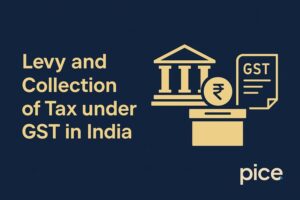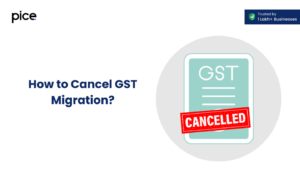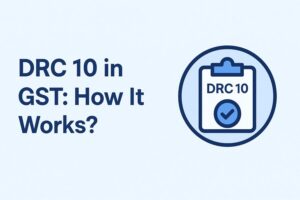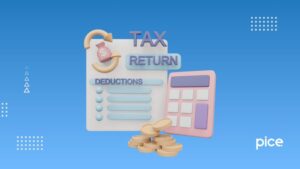How to Claim Missed ITC in GST?
- 26 Aug 24
- 12 mins

How to Claim Missed ITC in GST?
Key Takeaways
- Automated Reconciliation: The new GST return system simplifies ITC claims with automated invoice matching, reducing errors and manual intervention.
- Timely ITC Claims: ITC must be claimed by the due date of GSTR-3B for September of the following financial year or the annual return filing date, whichever is earlier.
- Supplier Compliance: Ensure suppliers upload invoices timely; ITC claims depend on their compliance and proper reporting in ANX-1.
- Eligibility Criteria: ITC is only claimable for business-related expenses with valid tax invoices and must meet conditions under Section 16 of the CGST Act.
- Continuous Reconciliation: Regularly reconcile monthly returns with GSTR-2A/2B to maintain accurate ITC records and avoid discrepancies.
Claiming flow of input Credit (ITC) under the GST regime is crucial for businesses to reduce their tax liability. With the introduction of the new GST return filing system, there have been significant changes and improvements to streamline the process.
This blog provides a comprehensive guide on how to claim ITC under the new GST return filing system, compares it with the present system, and highlights the needful steps to ensure compliance.
Comparison Between Present and New GST Returns
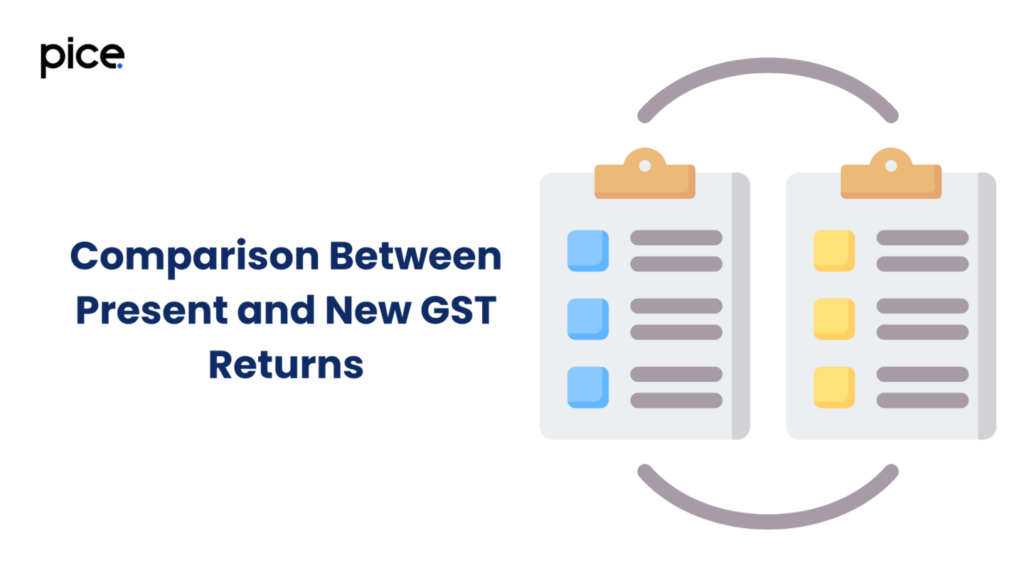
| Aspect | Present GST Return System | New GST Return System |
| Types of Returns | Multiple returns: GSTR-1, GSTR-2, GSTR-3, GSTR-3B, GSTR-9, etc. | Simplified returns: RET-1 (Normal), RET-2 (Sahaj), RET-3 (Sugam) |
| Reconciliation | Manual reconciliation of invoices and credit notes | Automated invoice matching and reconciliation |
| ITC Claim Basis | Input Tax Credit (ITC) claim based on self-declaration in GSTR-3B | ITC claim based on invoices uploaded by suppliers |
| Chances of Errors | Higher chances of mismatches and errors | Enhanced accuracy and reduced manual intervention |
| Compliance Complexity | Higher compliance complexity due to multiple returns | Simplified compliance with fewer returns |
| Process Efficiency | Manual and time-consuming processes | Streamlined and automated processes |
| Supplier Invoice Upload | Invoices manually matched with GSTR-2A | Supplier invoices uploaded and auto-populated in ANX-2 |
| Provisional ITC | Provisional ITC based on self-assessment | Limited provisional ITC, dependent on supplier’s compliance |
| Annual Reconciliation | Annual reconciliation with GSTR-9 | Continuous reconciliation with monthly returns |
ITC Claim under the Present GST Return Filing System
Under the present system, businesses claim Input Tax Credit (ITC) based on self-assessed data in GSTR-3B. The following steps outline the process to highlight important aspects:
Steps to Claim ITC
Step 1: Monthly GSTR-3B Filing:
- Declare eligible ITC based on inward supplies.
- Ensure that a valid Tax Invoice is available for all claimed ITC.
- The registered person must file the GSTR-3B return monthly.
Step 2: Invoice Reconciliation:
- Match purchase invoices with GSTR-2A to ensure accuracy.
- Ensure that the supplier has uploaded the invoice and it reflects in GSTR-2A.
- Regularly reconcile invoices to identify any discrepancies or mismatches.
Step 3: Claim ITC:
- Claim eligible ITC in GSTR-3B after verifying the supplier’s compliance.
- Ensure that the purchases are for taxable supplies and not for exempt supply.
- ITC can only be claimed if the tax component is for business purposes.
- Health services, beauty treatments, and expenses for employees on vacation are generally ineligible for ITC.
Step 4: Annual Reconciliation:
- Match GSTR-3B data with the annual return (GSTR-9) for final ITC claim.
- Verify the seamless flow of ITC from monthly returns to the annual return.
- Conduct a thorough reconciliation of credit on capital goods and other eligible credits.
Eligible and Ineligible Input Tax Credit
Eligible ITC:
- Goods and services used for business purposes.
- ITC on capital goods.
- ITC on services like transportation, warehousing, etc.
- Reverse charge mechanism (RCM) payments.
Ineligible ITC:
- Personal consumption.
- Goods and services for personal use.
- Membership of a club, health, and fitness center.
- Works contract services for immovable property (exceptions apply).
Items on which ITC is Not Allowed
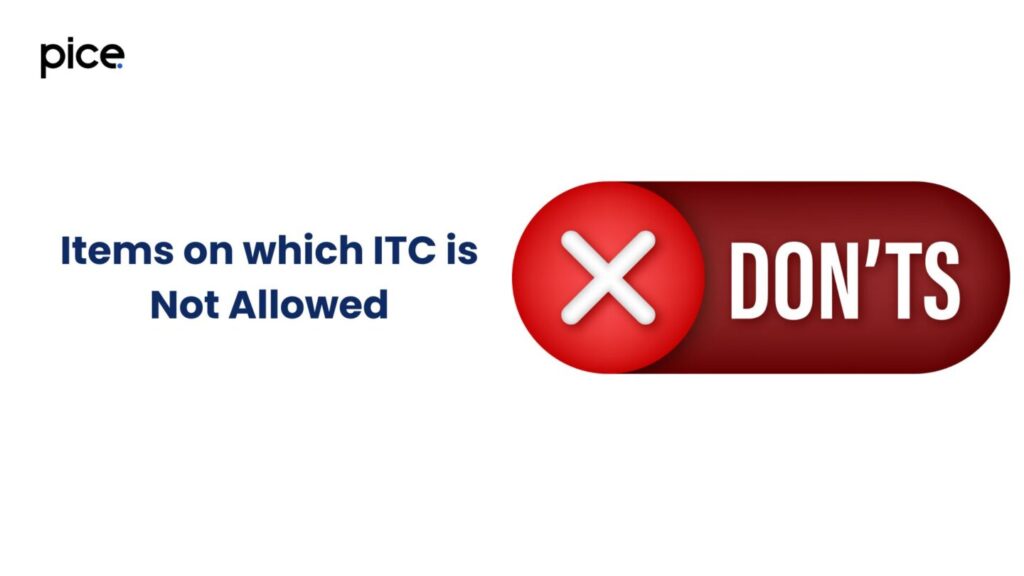
- Motor Vehicles: ITC is generally not allowed on motor vehicles used for personal purposes. However, if the vehicle is used for specific purposes like transportation of goods, providing training on driving, or as part of a transportation business, ITC may be claimed.
- Travel Benefits: ITC is not allowed on expenses incurred on travel benefits provided to employees on vacation such as leave or home travel concession.
- Health Insurance: ITC is not allowed for health insurance services unless it is mandated by law or provided as part of a statutory obligation.
- Composition Scheme: A taxpayer who opts for the Composition Scheme under GST is not allowed to claim ITC. This scheme is designed for small taxpayers to pay tax at a fixed rate without ITC.
- Non-Business Purposes: ITC cannot be claimed on goods or services used for personal or non-business purposes.
- Purchase of Capital Goods: While ITC on capital goods used for business purposes is allowed, it is not allowed if the capital goods are used for non-business purposes.
- Construction Credit: ITC is not available on goods or services used for construction of an immovable property (other than plant and machinery) on one's own account, even if used in the course or furtherance of business.
- Travel Concession: Similar to travel benefits, ITC is not allowed on travel concessions provided to employees.
- Job Worker: ITC is allowed for principal manufacturers on goods sent to job workers. However, ITC is not allowed if the goods are not received back within a specified time.
- Tax Burden: ITC cannot be claimed on the portion of tax that constitutes a cost in a transaction and cannot be passed on as a credit.
- Pre-GST Regime: Credits related to taxes paid under the pre-GST regime are not allowed under GST, except for transitional credits which have been claimed and carried forward.
- Future Tax Liabilities: ITC cannot be claimed against future tax liabilities. It can only be utilized against current tax liabilities.
- Component of Capital Goods: If the component is a part of capital goods used for business, ITC can be claimed. However, it is not allowed if used for non-business purposes.
- Composite Supply: For composite supplies, the tax rate applicable on the principal supply will apply on the entire supply, and ITC is allowed accordingly. If the principal supply is not eligible for ITC, the entire supply will not be eligible for ITC.
Who Can Claim Input Tax Credit under GST?
Registered Taxpayers under GST:
- Only those who are registered under the GST regime are eligible to claim excess input tax credit (ITC). Unregistered businesses or individuals cannot avail ITC.
Businesses Receiving Goods and Services for Furtherance of Business:
- ITC can be claimed by businesses on the goods and services received if they are used or intended to be used in the course or furtherance of business. This includes inputs, capital goods, and input services used in day-to-day business operations.
Entities Meeting the Conditions Prescribed under Section 16 of the CGST Act:
- According to Section 16 of the CGST Act, ITC can be claimed if the following conditions are met:
- The claimant must be in possession of a tax invoice or debit note issued by a registered supplier.
- The goods or services have been received.
- The supplier has actually paid the tax charged to the government.
- The claimant has furnished the GST returns (GSTR-3B).
Time Limit for Claiming ITC
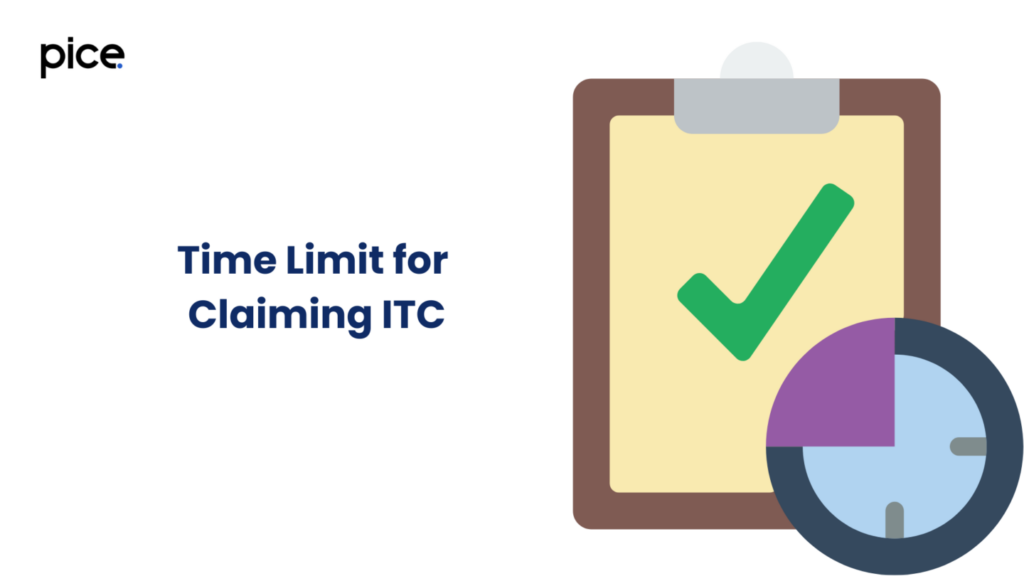
The time limit for claiming Input Tax Credit (ITC) under GST is defined under Section 16(4) of the CGST Act. ITC must be claimed before the earliest of the following dates:
- Due Date of Filing GST Return for September: ITC must be claimed before the due date of filing GSTR-3B for the month of September following the end of the financial year to which the invoice pertains.
- Annual Return Filing Date: ITC must be claimed before the date of filing the annual return for the relevant financial year (GSTR-9).
Example
- Invoice Date: April 15, 2022
- Financial Year End: March 31, 2023
- Due Date for September GSTR-3B: October 20, 2023
- Annual Return Filing Deadline: December 31, 2023
The taxpayer must claim ITC by October 20, 2023, or December 31, 2023, whichever is earlier.
Claiming and Reconciling ITC under GST with Example
Steps to Claim ITC:
- Match ITC with GSTR-2A/2B
- Reconciliation: Ensure ITC claimed matches the supplier's details as reflected in GSTR-2A or GSTR-2B. This involves checking invoices against the entries in the auto-populated forms to confirm eligibility and correctness.
- Reporting: Report eligible ITC in Table 4 of GSTR-3B. This table is used to declare ITC available, ITC reversed, and net ITC claimed.
- Invoice Amount: ₹1,00,000
- GST Rate: 18%
- ITC Amount: ₹18,000
ITC Claim under the New GST Return Filing System
The new GST return filing system emphasizes automation and accuracy in the process of claiming Input Tax Credit (ITC). Here are the detailed steps to claim ITC under this system:
Invoice Uploading by Supplier:
- Suppliers upload their sales invoices in the GST ANX-1 form. This form is an annexure of the main return form, used to report details of outward supplies, imports, and inward supplies attracting reverse charge.
Auto-Population of ITC:
- The invoices uploaded by the supplier in ANX-1 are auto-populated in the recipient’s GST ANX-2 form. The recipient can access ANX-2 for verification purposes and it contains information about inward supplies.
Reconciliation:
- Recipients review the auto-populated invoices in ANX-2 and have the option to accept, reject, or keep the invoices pending. Reconciliation ensures that the ITC claims match the supplier's reported details, reducing discrepancies.
Monthly Filing:
- Recipients file their monthly returns using RET-1 (normal taxpayer), RET-2 (Sahaj), or RET-3 (Sugam) forms. These returns need to accurately reflect the ITC claims and other transaction details.
- The electronic credit ledger gets updated with the claimed ITC after the returns are filed.
Invoices Not Uploaded by the Supplier
If suppliers do not upload invoices, businesses may face denial of Input Tax Credit (ITC). Here are key steps to manage this:
- Regular Follow-Up: Regularly follow up with suppliers to ensure they upload invoices on time.
- Utilize Provisional ITC: Businesses can utilize provisional ITC up to 20% of the eligible ITC if the invoices are pending.
Relevance of Section 43A in New GST Return System
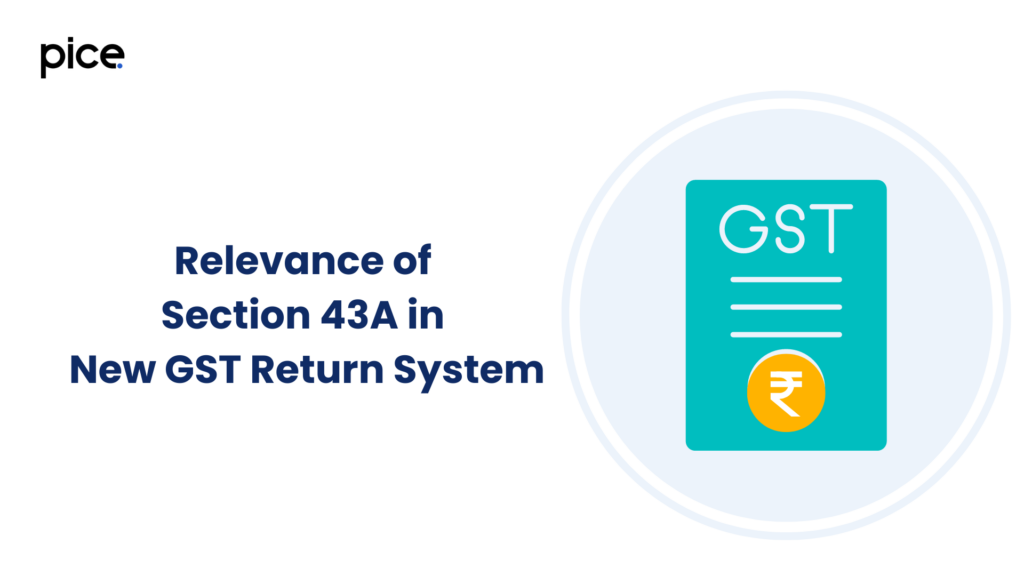
Section 43A introduces a two-way communication process for claiming and matching Input Tax Credit (ITC). This section is significant for ensuring accurate ITC claims and business compliance with GST regulations.
Key Provisions of Section 43A:
- Provisional ITC Claim:
- Businesses can claim provisional ITC based on the invoices uploaded by their suppliers.
- This allows businesses to utilize ITC even if the supplier has not yet paid the tax.
- Final ITC Claim:
- Final ITC can only be claimed once the supplier complies with their tax obligations and pays the due tax.
- This ensures that the credit claimed by the recipient is matched with the tax paid by the supplier.
Importance in the New GST Return System:
- Improved Compliance: Section 43A incentivizes suppliers to upload invoices and pay taxes on time to ensure their buyers can claim ITC.
- Reduced Fraud: By comparing the credit that the recipient claims with the tax that the supplier has already paid, the two-way communication aids in reducing ITC fraud.
- Streamlined Process: This section streamlines the ITC claim process by establishing clear guidelines for provisional and final claims.
- Enhanced Transparency: The matching mechanism enhances transparency in the tax credit system, making it easier for tax authorities to track and verify ITC claims.
Needful Things to Do for ITC and Reversal Tax Credit
- Properly View GST Invoices and All Debit Notes:
- Ensure all invoices and debit notes are accurate and uploaded.
- Accurate Reconciliation Between GST Returns and Books:
- Regularly reconcile GSTR-2A/2B with purchase registers.
- Proper Record Keeping:
- Maintain organized records of all invoices, debit notes, and ITC claims.
- On-Time GST Return Filing:
- File all GST returns (RET-1/2/3) on or before due dates.
- Quickly Resolve Any Problem:
- Address any discrepancies or mismatches immediately.
- Connect with Suppliers:
- Maintain good communication with suppliers to ensure timely invoice uploads and compliance.
Conclusion
By following these steps and understanding the differences between the present and new GST return filing systems, businesses can effectively manage their ITC claims and ensure compliance with GST regulations. The new system promises a more streamlined and automated process, reducing errors and enhancing the overall efficiency of the tax compliance process.
💡Facing delays in GST payment? Get started with PICE today and streamline your GST payments. Click here to sign up and take the first step towards hassle-free GST management.
 By
By 






